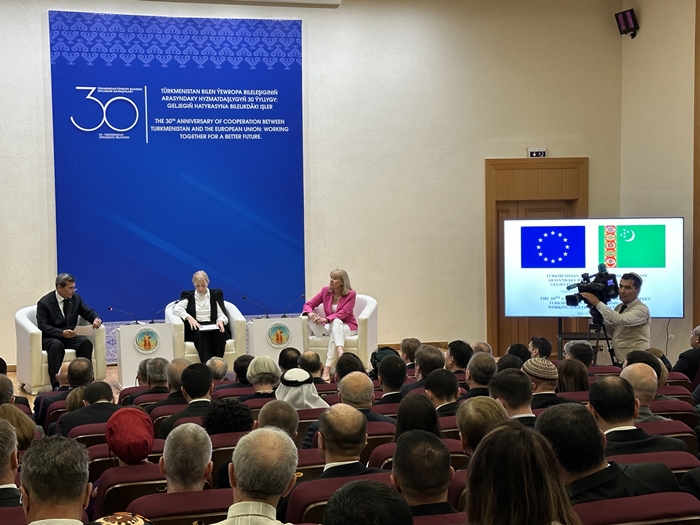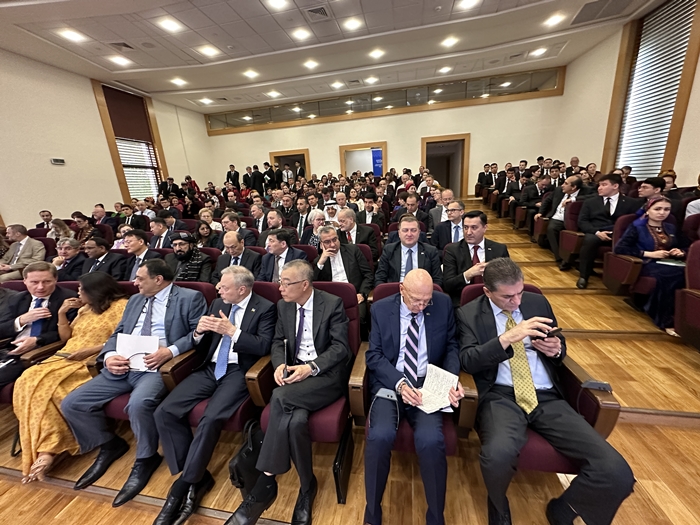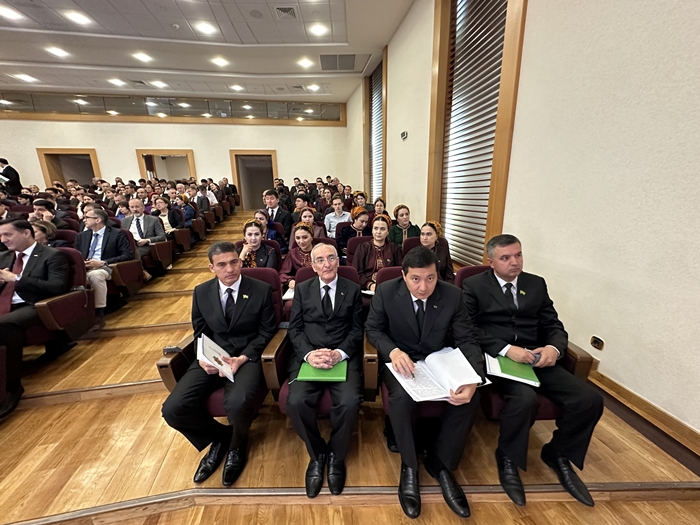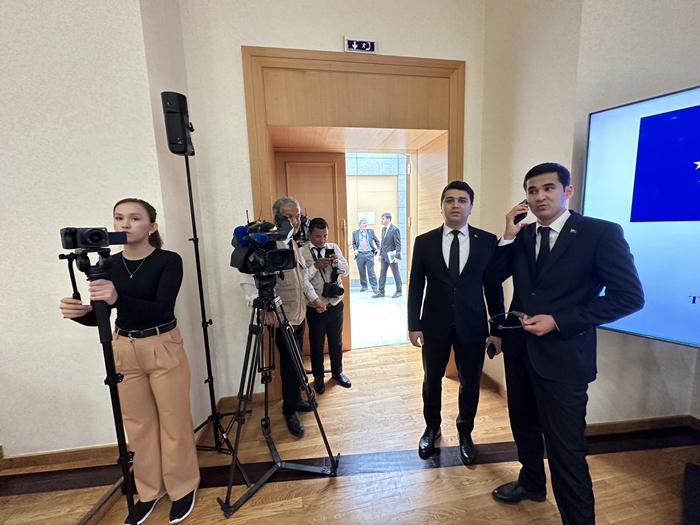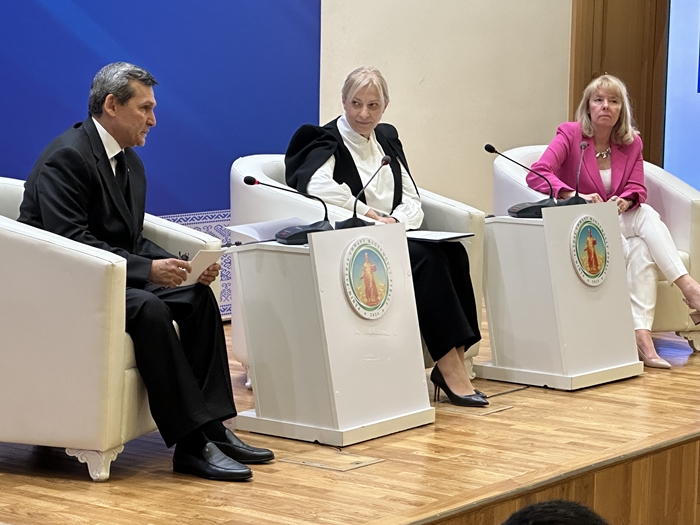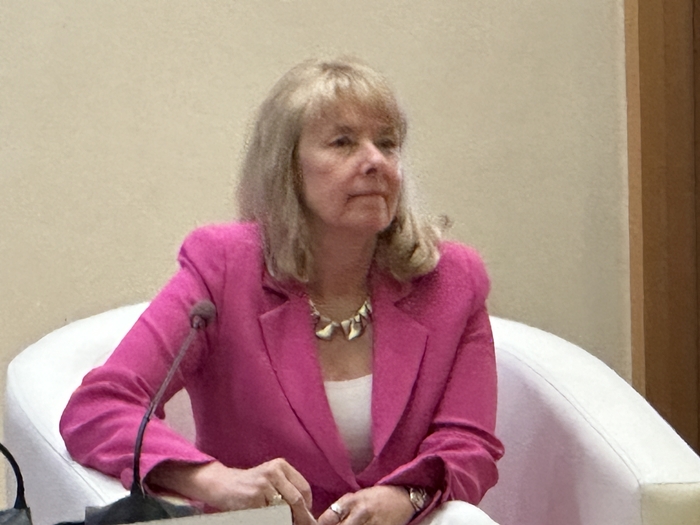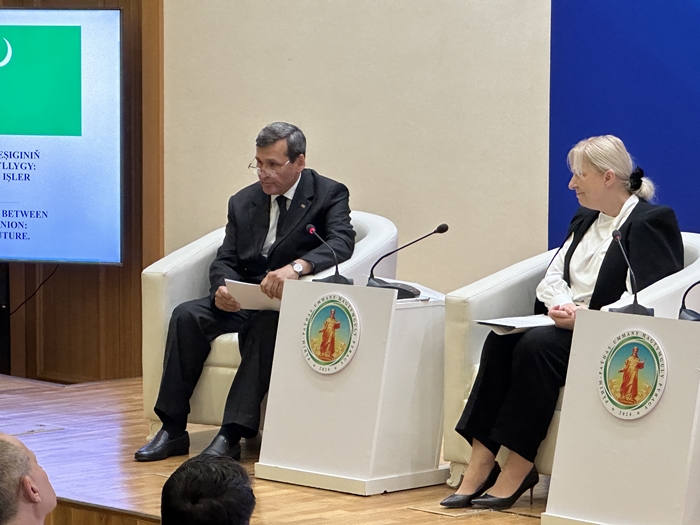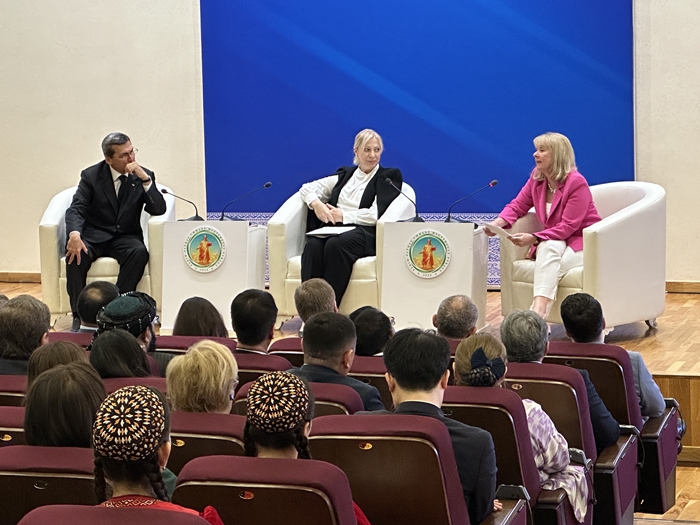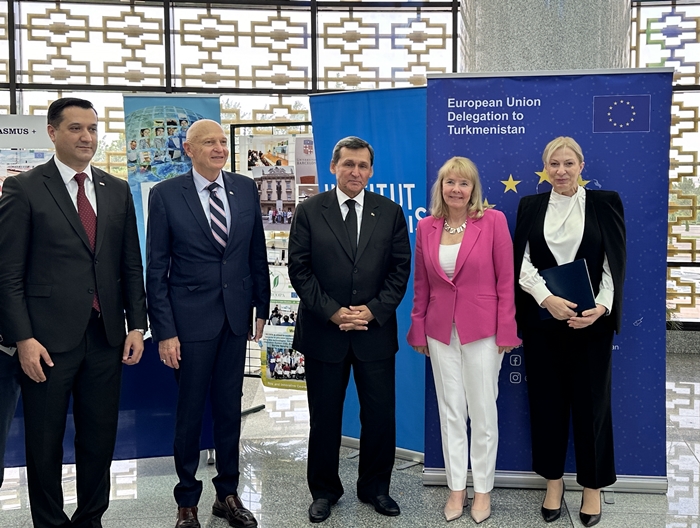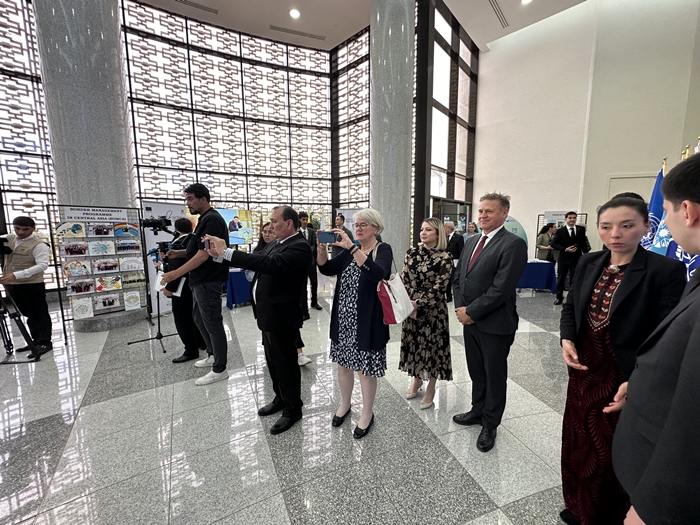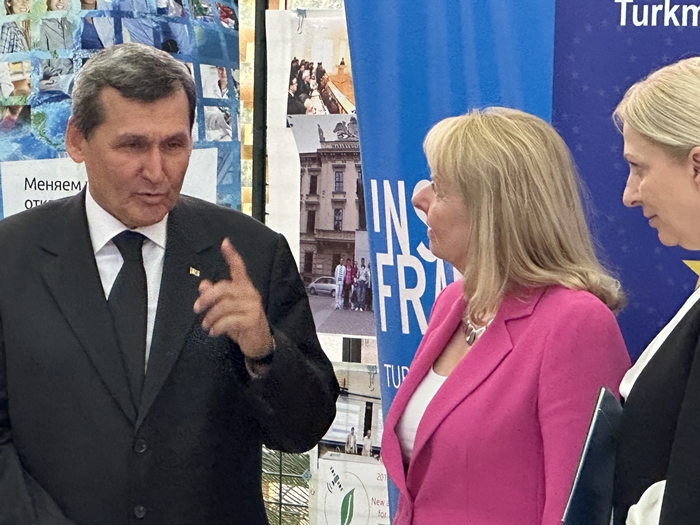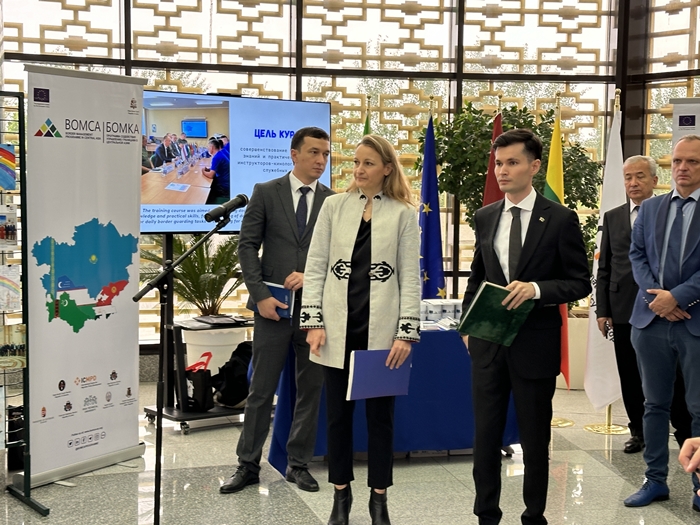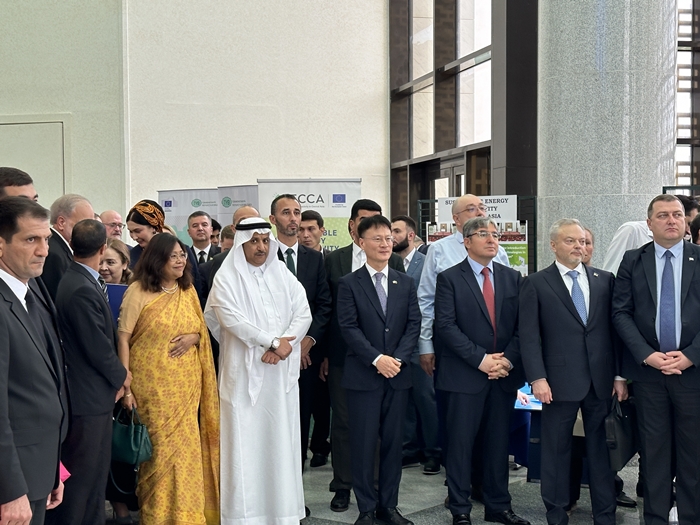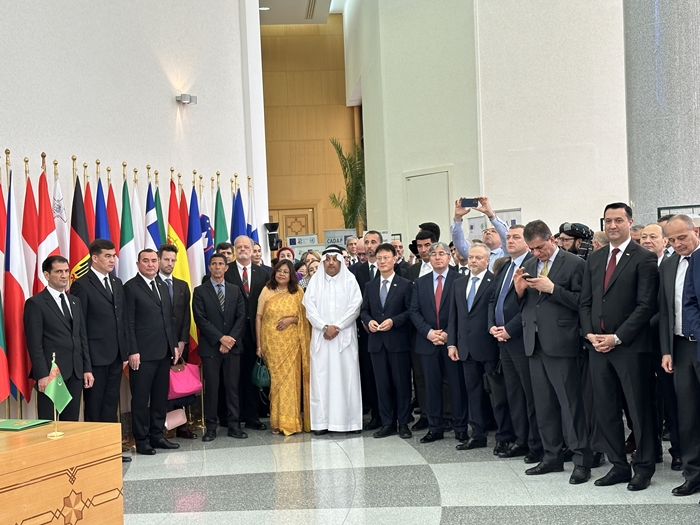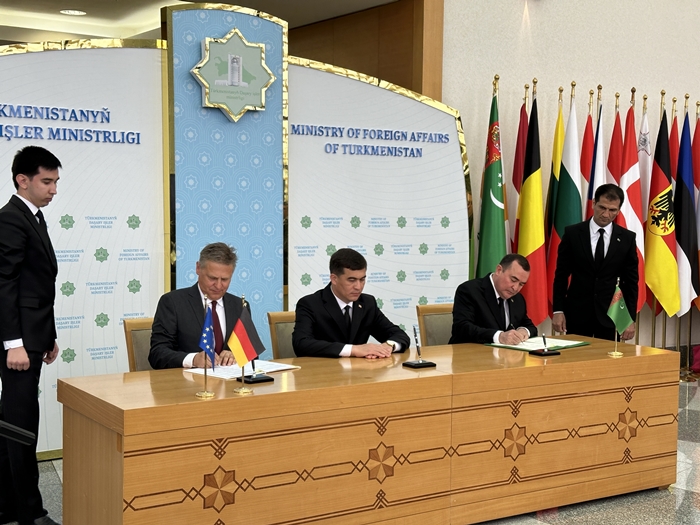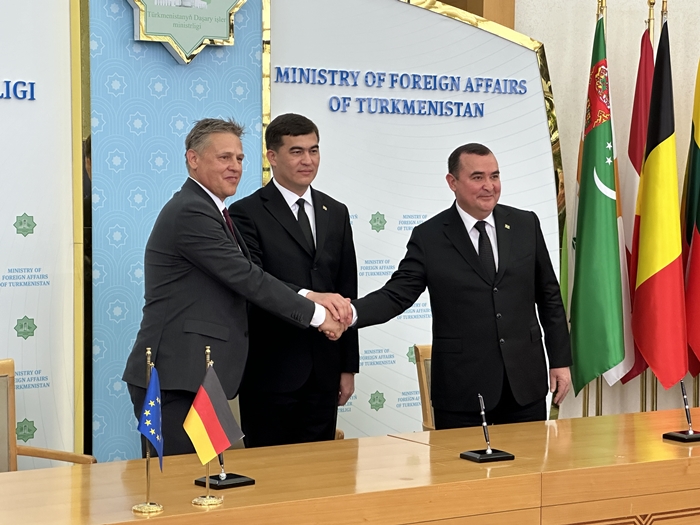nCa News and Commentary
Turkmenistan and the EU jointly organized a conference on 14 May 2024. The theme of the conference: ‘30 Years of Cooperation between the European Union and Turkmenistan: working together for a better future.’
The conference was a composite event. The inaugural session, which was in the format of panel discussion, featured the DPM and foreign minister of Turkmenistan, Rashid Meredov, and Ms Terhi Hakala, European Union Special Representative for Central Asia. The Ambassador of the European Union to Turkmenistan, Ms Beata Pęksa, moderated the session.
This session was a complete event unto itself. In more than 50 minutes of focused conversation, Meredov and Hakala, with questions from Pęksa, summed up not only the extent of cooperation during the past 30 years but also the spirit that drives the cooperation.
Meredov briefly described the priority areas for future cooperation. [We have covered his remarks in a separate story. Ed.]
The thematic sessions during the day covered a wide range of subjects including partnership in education, cooperation in trade, economic policy of Turkmenistan, partnership in green economy, and security.
These sessions were designed to serve as the showcase of what has been achieved together in different areas.
The German Corporation for International Cooperation (GIZ) and Turkmenistan signed for the project “EU for a green Turkmenistan: Policy Dialogue and Climate Action 2024 – 2028.” A corresponding memorandum on the implementation of the project was signed between the Ministry of Energy of Turkmenistan, the State Concern “Turkmengaz” and GIZ.
There was a small exhibition to highlight the solid work being done in different areas.
nCa Commentary by Tariq Saeedi
The conference, and the related events, summed up the cooperation between Turkmenistan and the EU during the past 30 years. It was also the time to focus on the future in the light of the past.
Another purpose, perhaps not intended when planning this string of event, has been served — There has been a neat defragmentation of the partnership components.
The tertiary roots of the partnership processes are interconnected. Let’s dilate on this point by a couple of examples.
For instance, a project in the transport facilitation may seem on the surface a bilateral undertaking but in most cases there are several contributors including other countries and organizations. Some of their input could be monetary and some of it could be in the form of material or expertise. — After defragmentation, we can clearly see that the EU, not only as an organization but as a sophisticated hive mind makes this happen.
In another example, when a group of technicians goes for training to an EU country, they could be learning on the machines produced in some other EU country, and their instructors may have studied in yet another EU country. — In this case of defragmentation (whenever it happens), they see unanimity in diversity, a central part of the soul of the EU.
There is the need to work systematically on this defragmentation to tap the full potential of the EU for partnership with Central Asia. There is the need to highlight that Europe is full of all kinds of possibilities. For this, we should temporarily delete in our mind the line between the EU and non-EU countries.
The range of possibilities can perhaps be highlighted by the fact 10 of the most expensive schools in the world are all located in Switzerland, and they deliver on their promise.
On the other hand, the best education is available free of cost in Germany.
About two-third of total energy consumption in Sweden comes from alternative sources.
France remains the country most committed to social benefits, with almost a third of French GDP spent on social services by the government. Scandinavian countries appear high up on the ranking, with Denmark, Sweden and Norway all spending more than 25%.
There are different systems of government in Europe.
Switzerland is governed under a federal system at three levels: the Confederation, the cantons and the communes. The citizens can have their say directly on decisions at all political levels. The president is elected by the Federal Assembly from the Federal Council for a term of one year.
The UK, the Netherlands, Norway, Spain, Sweden, Belgium, Denmark, Lichtenstein, Monaco, Luxembourg, Andorra and the Vatican City are constitutional monarchies.
However, in the matter of actual governance, Parliamentarianism is the dominant form of government in Europe, with 32 of its 50 sovereign states being parliamentarian.
This needs to be juxtaposed with the fact that the merit of a state is in what it can deliver to its subjects, regardless of the system of governance. The active explanation here is part of the process of defragmentation.
The productive 30 years of partnership between Turkmenistan and the EU are an important milestone, but just a milestone nevertheless.
Even in the bilateral interactions between the EU countries and Central Asia, it would be useful to highlight at some level that the tertiary roots are intertwined with the living and thriving organism called EU. /// nCa, 15 May 2024
Here are some pictures from the event:

